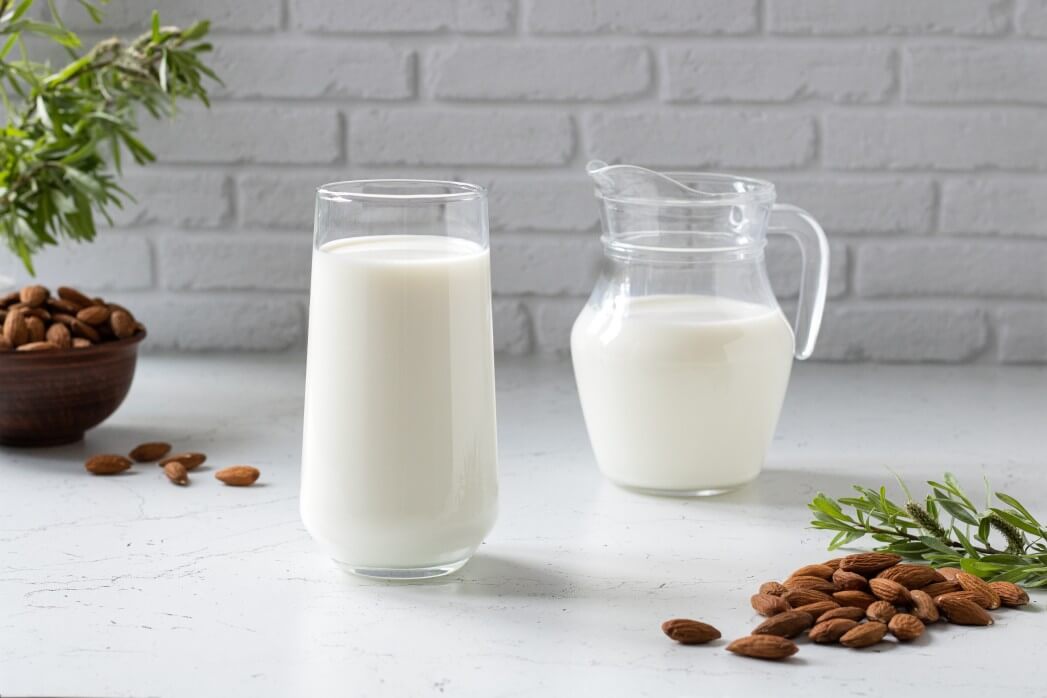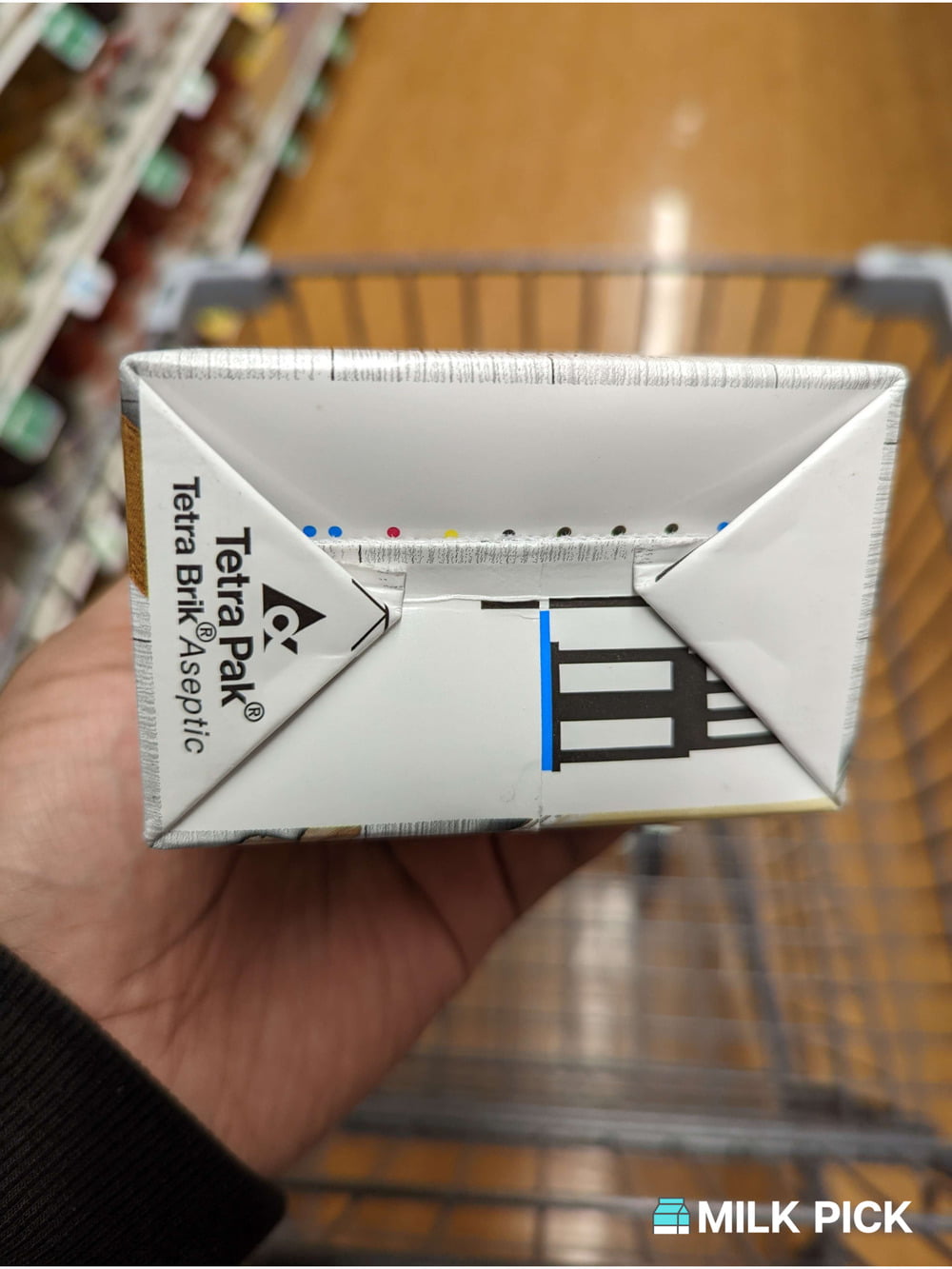If you handle dairy milk, you are likely aware that it cannot stay out of the fridge for very long without starting to go bad.
When cow’s milk sits out at room temperature it may start to grow bacteria, which produce lactic acid and give bad milk a sour taste and smell.
Almond milk is different from cow’s milk and doesn’t contain the same chemical properties.
The differences mean that almond milk doesn’t go bad the same way dairy milk does; however, it's still important to understand how long almond milk can sit out without going bad and endangering your health.
The time almond milk can sit out of the fridge and still be safe to consume depends mostly on how it was prepared, but also on the conditions in which it’s kept.
Quick Answer
How Long Can Almond Milk Sit Out?
Homemade or refrigerated almond milk shouldn't sit out for more than two hours. Unopened shelf-stable almond milk can sit out until the expiration date (generally 6-12 months).
The Almond Milk Manufacturing Process
Understanding how different almond milk is made can help you know how long each type can sit out of the refrigerator.
The three main types of almond milk are homemade, shelf-stable, and refrigerated.
Homemade Almond Milk
Homemade almond milk is made by blending raw, skinned almonds with water.
Some people also use convenient almond milk bases to make hassle-free homemade almond milk.
When you make homemade almond milk, you typically follow home-cooking procedures, including washing your hands and using a clean blender and utensils.
Unfortunately, these steps are often not enough to ward off bacteria or mold for very long.
Your hands, kitchen countertop, and the container into which you pour your homemade almond milk likely contain microscopic bacteria that will make their way into your finished product.
Refrigerating homemade almond milk can keep it fresh for about 7 days, but after that, it will start to spoil, even at refrigeration temperatures.
If you were to leave almond milk out under these conditions, it would likely be unsafe after about two hours.
Refrigerated Almond Milk
Refrigerated almond milk typically refers to store-bought almond milk that requires refrigeration.
These almond milk beverages are made in the same way as homemade almond milk - with water and almonds.
For refrigerated almond milk, manufacturers add extra ingredients, like emulsifiers, vitamins, and preservatives to help their almond milk last longer as it travels from their factory to the store and finally to your home.
Another step that almond refrigerated almond milk manufacturers take to ensure a longer shelf-life is using pasteurization to kill bacteria during packaging.
Part of this process is known as High Temperature, Short Time (HTST).
HTST exposes the almond milk to 161°F for about 15 seconds, after which it is cooled to 39°F.
This kills 99% of bacteria so that almond milk stays fresh for weeks on the store shelves and in your refrigerator at home.
After opening refrigerated almond milk it should last about seven days if kept at refrigeration temperatures.
However, just like homemade almond milk, if you leave this almond milk out longer than two hours, you should throw it away.
Shelf-Stable Almond Milk
In the beginning stages, shelf-stable almond milk is made the same as refrigerated almond milk.
Many brands contain preservatives and added vitamins and emulsifiers like gellan gum and carrageenan.
These additives give shelf-stable almond milk its creamy texture and help it last longer.
Shelf-stable almond milk undergoes a special type of processing called ultra-pasteurization at Ultra High Temperatures (UHT).
During this process, the liquid is headed to 280–302 °F for just one or two seconds, then packaged in FDA-required hermetically-sealed packaging.
This almond milk must be manufactured in aseptic conditions to prevent any bacteria from entering the containers.
It can last several months, sometimes up to a year, without refrigeration.

How Long Can Opened Almond Milk Sit Out?
No matter what type of almond milk you have, opening the container introduces bacteria and other pathogens into the liquid and container.
Homemade, refrigerated, and shelf-stable almond milk only last about 7 days after opening.
The USDA recommends keeping refrigerated items at 40°F or below to prevent spoilage.
Therefore, after opening any container of almond milk, it cannot sit on the counter at room temperature for more than two hours.
If the temperature in your home is above 90°F, you should throw away your opened almond milk after just one hour.
Related: Can You Heat Up Almond Milk?
How Long Can Unopened Almond Milk Sit Out?
Unopened almond milk can sit out much longer than opened almond milk; however, this only applies to shelf-stable almond milk in tetra-pak type containers.

Fresh and refrigerated almond milk should follow the two hours rule.
When you first bring shelf-stable almond milk home, keep it in a cool, dry place where it can remain at a stable temperature.
Exposing shelf-stable almond milk to high temperatures can alter the liquid inside and cause it to go bad sooner.
You may see a number of different dates printed on your shelf-stable almond milk.
If you see a “best used by” date, use your almond milk before then for the best quality.
The “use by” designation also indicates a time frame to use the almond milk for peak freshness.
The answer to how long shelf-stable almond milk can stay out is the expiration date.
A printed expiration date on your shelf-stable almond milk packaging indicates when the product expires and is no longer safe to use.
Because shelf-stable almond milk is specially packaged in aseptic or sterile conditions, it can sit out under normal conditions until this expiration date, typically up to one year.
Here's a video from Flavcity that goes into more detail about "best by" and "expiration dates".
What Happens If You Leave Almond Milk Out Too Long?
If you leave almond milk out too long (aside from unopened shelf-stable almond milk) it will begin to spoil.
Food spoilage is a natural process that is influenced by the following elements:
Temperature
Temperature greatly affects the safety of almond milk.
Refrigeration slows all types of bacterial and mold growth because these pathogenic microorganisms don’t grow well in refrigeration temperatures.
Keeping your almond milk in the fridge when you’re not pouring it is necessary to extend its shelf life.
Aim to keep your opened almond milk between 34-40°F and your unopened shelf-stable almond milk between 50-70°F.
Enzymes
Naturally occurring enzymes help ripen food items like fruit and cause color, flavor, and texture changes, such as curdling in almond milk over time.
The enzymes in your almond milk may cause it to change texture or flavor, and when left out of the fridge, this process may speed up, causing your almond milk to go bad sooner.
Microorganisms
Microorganisms are microscopic bacteria or mold that grow on food and contribute to its breakdown.
They grow profusely between 60-90°F, which is why leaving almond milk out on the counter is so dangerous, especially in hot conditions.
Microorganisms will grow now matter what in opened almond milk, but leaving it out on the counter speeds their growth and moves the danger zone from almost a week to a few hours.
Pests
Almond milk spoilage can also be caused by pests like parasites, insects, or rodents that cause physical damage to the almond milk container.
These pests can chew through unopened shelf-stable almond milk, causing it to leak and exposing it to harmful pathogens.
It's essential to keep your shelf-stable almond milk in a location free of pests or insects to avoid this type of spoilage.
What Happens If You Drink Almond Milk That’s Been Out Too Long?
When you leave refrigerated or opened shelf-stable almond milk out for over two hours, it's best to throw it away.
If you put it back in the fridge to drink later, you may experience food poisoning symptoms.
Food poisoning can cause the following symptoms, depending on how much almond you drink and how far spoiled it is:
- Fever
- Diarrhea
- Nausea
- Loss of appetite
- Stomach pain or cramps
- Fatigue or weakness
- Muscle aches
- Vomiting
- Chills
Different types of mold that can grow in almond milk that is left out too long can cause serious food poisoning symptoms.
Mycotoxins, invisible toxic chemicals produced by mold, can cause acute gastrointestinal distress, and some mold can cause allergic reactions.
Although leaving almond milk out for a short time may not cause mold to grow immediately, sports may take hold and grow slowly even if you put it back in the refrigerator.
The most common cause of food poisoning from almond milk is bacteria.
Bad bacteria thrive when almond milk is left out; depending on how long you leave it out and how much you drink, you may suffer severe food poisoning after consuming it.

Keep Your Almond Milk Safe to Drink
Almond milk is a healthy alternative to dairy milk and can be part of a well-rounded diet for all types of people.
However, it's important to take the same safety measures you use with other foods to ensure your almond milk stays safe to drink.
If you buy shelf-stable almond milk, keep it in a safe, dry location and use it by the manufacturer’s expiration date.
Once opened, keep it refrigerated and use it within 7 days.
With fresh homemade almond milk or store-bought refrigerated almond milk, keep your products refrigerated when you’re not pouring yourself a glass or measuring it out for a recipe.
Never leave any opened almond milk out for more than one to two hours; if you do, throw it away just to be safe.
